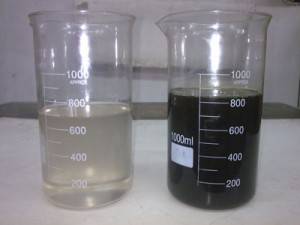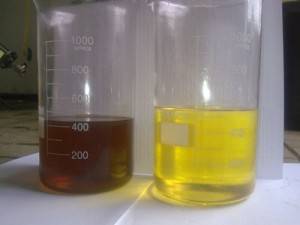Used oil regeneration technologies
Over time, oil accumulates oxidation products, contaminants and impurities which drastically reduce its quality. Contaminated oil can no longer meet quality requirements and must be changed. Waste oil is collected and regenerated to retain valuable basic materials.
Oil cannot be recycled at petroleum processing plants with fossil oil, since additives contained in the oil disrupt oil processing machinery.
Depending on the actual regeneration process used, 2 or 3 basic oil fractions are produced; these can be mixed with additives to produce commercial oil (motor, transmission, hydraulic oils and plastic lubricants). Average yield of regenerated oil from waste oil containing 2 – 4% solids and water and up to 10% fuel, is 70 – 85% depending on the regeneration process used.
Regeneration of waste oil may involve various technologies, based on physical, chemical of combined physical and chemical processing. All of these processes are aimed to remove aging products and contaminants from the oil. The following sequence is normally used: mechanical removal of free water and solids from oil, evaporation or vacuum distillation and coagulation. If the above prove insufficient, chemical oil regeneration is used; those methods usually involve complex equipment and high costs.
Physical methods allow removal of solids particles, microscopic water droplets and some tar and coke material; evaporation removes some volatile impurities. Oil is processed by gravity, centrifugal force, and sometimes by electric or magnetic fields and vibration; other methods include filtration, water wash, and vacuum distillation. Physical methods also include various mass and heat exchange processes used to remove hydrocarbon oxidation products, water and volatile fractions.

Regenerated transformer oil by GlobeCore`s plants
Settling is the simplest method, based on natural gravity settling of particles and water. Depending on the degree of contamination and time allotted for purification, settling can either be used as a standalone method, or as preparation for filtration and centrifuge. The drawback of this method is the long time it takes and the large size of particles that can be removed (50 – 100 micron).
Filtration is a process to remove solid contaminants and tars by making the oil pass through mesh or porous filters. Common filtering media are metal and plastic meshes, felt, fabric, composite material and ceramics. Most facilities combine an increased number of strainers for basic filtration with the second stage of fine filtration.

